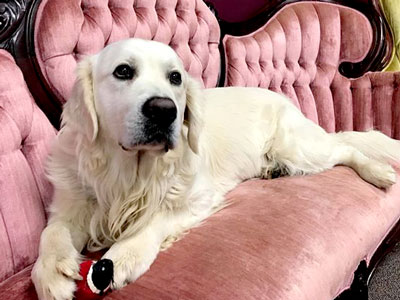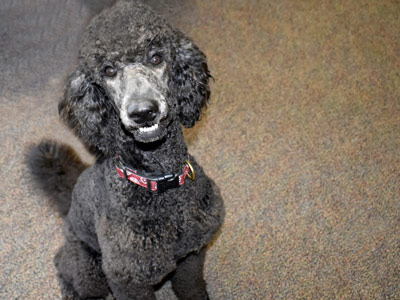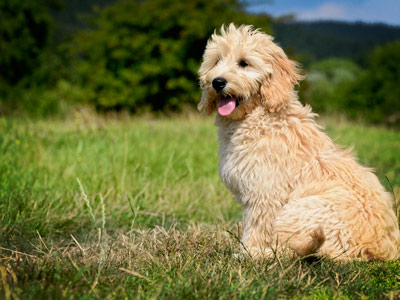Welcome to DoodleSmith
I am a breeder of First Generation English GoldenDoodles, also referred to as F1 English TeddyBear GoldenDoodles. This breed is a cross between an English Golden Retriever and a Standard Poodle, two of the most friendly and smartest breed of dogs in the world.

English Golden Retrievers look different from American Golden Retrievers. They have a heavier, stockier build, a broad head, round eyes and a long protruding neck with clean- trimmed ruff. They were originally bred as a hunting companion, however, many are used today to assist with search and rescue missions.

Poodles are a breed of distinction, elegance, and dignity and are loyal and deeply devoted to their family; they thrive on human companionship. The Standard Poodle is an active dog, very smart and exceptionally athletic. They were bred to retrieve things from water. Poodles have a single layer of coat which is dense and curly, shedding minimally.

The F1 EnglishTeddy Bear GoldenDoodle is a first generation cross (the true goldendoodle) of the English Golden Retriever and the Standard Poodle, often resembling a Teddy Bear. They are known to have added health benefits because of what is known as Hybrid Vigor, where the first generation cross of two unrelated purebred lines inherit the best qualities from both parents. It's DNA is 50% Poodle and 50% Golden Retriever. However, the puppy produced by a cross of an F1 Goldendoodle (F1B, F2, Multigen) does NOT give its DNA to the next generation in an equal split of its two parents DNA. The percentage of golden and poodle DNA in subsequent generations is only a guess and may produce unexpected traits. Hybrid Vigor is decreased with each successive generation.
Hybrid vigor works in the first generation only, while ‘mongrels’ or ‘mutts’ come in all shapes and sizes. F1 breeds are produced from highly homozygous parents and therefore have only one possible genetic combination. If an F1 generation dog mates with another F1 generation dog, there are hundreds of possible combinations produced. The offspring would be of the F2 generation. In the F2 generation, the dog is likely to be more variable and have less hybrid vigour.*
* Dr. Kate Schoeffel, Veterinarian, Australian Breeder